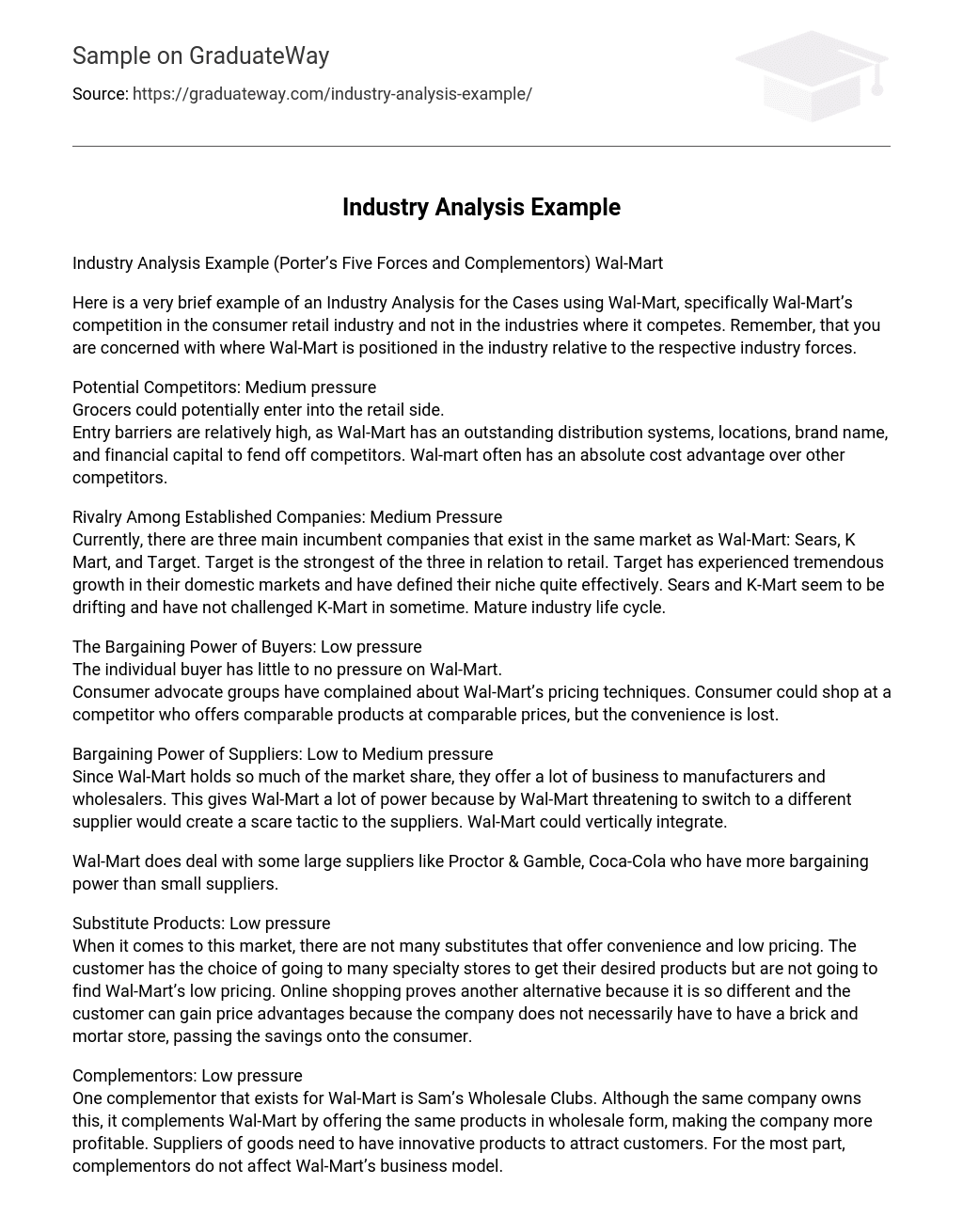A summary of an Industry Analysis for Wal-Mart cases, specifically examining its competition in the consumer retail industry and excluding other industries it competes in. The main objective is to assess Wal-Mart’s position within the industry by analyzing various forces.
Potential Competitors: Medium pressure
Despite the obstacles, grocers have the opportunity to enter the retail industry. However, Wal-Mart’s outstanding distribution systems, strategic locations, well-known brand name, and substantial financial resources deter competitors. As a result, Wal-Mart typically maintains a clear cost advantage over other rivals.
Rivalry among established companies: Medium pressure
Wal-Mart faces competition from Sears, K-Mart, and Target in the market. Among these rivals, Target stands out as the most formidable retailer with its unique position and notable growth within domestic markets. However, Sears and K-Mart have lagged behind their competitors and pose little threat. Overall, it can be inferred that the industry is in a mature life cycle.
The Bargaining Power of Buyers: Low pressure
Despite criticism from consumer advocate groups regarding Wal-Mart’s pricing strategies and the limited influence customers have over the company, choosing a competitor with similar products and prices may require giving up the convenience of shopping at Wal-Mart.
Bargaining Power of Suppliers: Suppliers exert a moderate level of pressure.
Due to its large market share, Wal-Mart has a considerable advantage in attracting business from manufacturers and wholesalers, which gives the company significant power. This power allows Wal-Mart the option to vertically integrate and also intimidates suppliers who may consider switching to another retailer. By partnering with major suppliers like Proctor & Gamble and Coca-Cola, Wal-Mart further strengthens its bargaining power. However, smaller suppliers face a different situation altogether.
Low pressure Substitute Products
In this market, there are limited alternatives for convenience and affordable pricing. Speciality stores offer desired products, but not the low prices of Wal-Mart. Online shopping provides another option where customers can benefit from competitive prices due to the absence of physical stores, resulting in cost savings passed on to consumers.
Complementors: Low pressure
One complementor that is associated with Wal-Mart is Sam’s Wholesale Clubs, which is owned by the same company. Sam’s Wholesale Clubs complements Wal-Mart by offering the same products in wholesale form, ultimately contributing to the company’s profitability. In order to attract customers, suppliers must provide innovative products. Generally, the presence of complementors does not significantly impact Wal-Mart’s business model.





